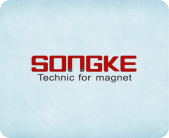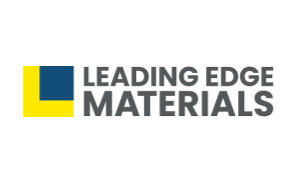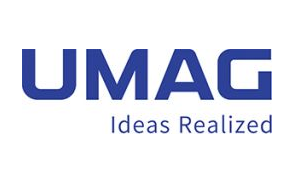News
February 21, 2019
Report: REIA-FairMagnet workshop on REE supply chain certification and transparency
“How a sustainable supply chain can benefit your business”
Registration
11.40-12.00
Why REIA-FairMagnet is relevant: Experience from the field Brugger Magnetsysteme GmbH, Thomas Brugger & Berners Consulting, Lutz Burner
Meeting Report
The membership base could include all members from the REE supply chain, but today the focus is on the permanent magnet supply chain. The membership cloud could still dramatically transform but it is clear that the rest-of-world players from the upstream side are already partnering in our first efforts. The membership fee structure was also revealed. It could be reevaluated with the new management team when elected in June.
Several of the constituents are dubious when it comes to a sustainable supply chain. For example, one attendee stated that there is not a demand for people who want to pay extra for a clean magnet. Another states that the problems with the supply chain are already known, and the next step should be to fix them. Tackling these problems and finding solutions together—in conjunction with the Chinese and other global stakeholders—is one of the prime objectives of the association.
The trigger statement from this session was: It is important that the REIA will make rare earths value chains more transparent, as financial decisions are driven by publicly communicated information. While many participants admitted that financial decisions are driven by publically communicated information, some attendees were adamant that legislation will be the only driver for a transparent, sustainable supply chain.
It was explained that the trilateral EU, US, Japan conference adds value in terms of updating information on the downstream supply of REE products.
It was indicated, that in Europe high-tech materials are not missed in the geology, but in the production.
The REIA could pick up, where the ERECON left the stage in 2014 and implement its recommendations.
The EC will have a R&D project call programme that will offer a support of 90 m€ for 2020
The FairMagnet was set up from a EHS perspective to create a more personal relationship with Chinese suppliers and start a discussion on CSR optimisation potential, as Chinese upstream supply is a black box
Also the contractual and operational relationship is expected to improve from the FairMagnet initiative; performance has been increasing since
FairMagnet was implemented with the help of the Nanjing University, that developed a set of EHS principles, which were implemented in a FairMagnet supply certification scheme
Four Chinese suppliers have opened up to the FairMagnet programme; some insight into the upstream supply chain has been given
German management is allowed to visit production sites and maintain a regular dialogue
The target is, to maintain ecological, economic and social standards along the entire value chain, by:
- Offer support over the entire life cycle of the magnet
- Step by step introduction of sustainable chain management in the magnet industry
- Set up partnership relationships and promote cooperation between German and European and Chinese actors
FairMagnet is interested, if the REIA can obtain and share more upstream information from the REE Permanent Magnet value chain.
Triggering question: “fairness of the magnet supply chain concerns mainly issues of health and safety, as existing EHS standards are not always properly implemented?”
CSR issues should be traced upstream, as this is where the life cycle starts
The FairMagnet initiative gets feedback and delivers optimization to the supply chain, but does not offer a tool for direct control
The REIA has the potential to expand the FairMagnet initiative on a global basis, as an Upscaling Project
It was confirmed, that the EIT RawMaterials and H2020 have the means to sponsor such global projects, if the EU participation plays a vital role. Also other regional funds are available for such project initiatives.
Battery parallel: due to public pressure, the German government will now investing 1.5 billion € in battery manufacturing.
The European Battery Alliance could possibly be expanded into a Motor Alliance, in which an REE Alliance could be incorporated
Small 48V motors with strong permanent magnet driven motors could be key to sustainable e-mobility.
FairMagnet could also integrate CO2 policies into its portfolio
- How we asses if toxic waste is treated instead of dumped? What is the environmental impact of treatment process and can the climate protection effects be measured in such cases?
- How the upstream industry mitigates the effects from low impact radioactivity and in such cases, are the environmental benefit quantifiable?
- How the companies make decision on for solvent extraction:
- Is it better to use ionic liquids or acids?
So the objective of building this data base is to provide the industry a benchmarking tool and companies could use this LCA to compare their own footprint to know if they are above or below or within industry average.
Gwen provided primary results of her study on different impact categories (the standard LCA tools) such as global warming potential, human toxicity, particular matters etc which is measured as a person equivalent.
The results showed that the human toxicity impacts are suspiciously high compare to other impact categories in producing one kilogramme of rare earth mix from all three mineralogical types.
The LCA results of contribution analysis shows that the solvent extraction having the highest impact.
Some of the challenges to the study is that it is not useful to use all impact categories to explain REE production and there are very little information on Chinese waste management system.
Gwen concluded her presentation by saying that no industry association exists to gather altogether this life cycle information but from now on our association will do this task for its members to realize our objective collectively of a sustainable rare earth industry.
The presentation was followed by lively discussion on methodological aspects of LCA, allocation methods, originality of impact categories and falsification of data. On question of methodology, Gwen replied that LCA has its own ISO approved standards which is a recognized tool to analyze environmental impact globally.
In complying with EU’s environmental foot print regulations, they have developed a product which is first in the world to get a certificate on FPD. Grundfos has also started a take back policy by collecting the end of life products and working with a recycling company to refurbish and re-use the components.
Finally there was a couple of questions as follows;
Is the company only driven by financial aspects and Badri replied, it is also driven by green aspects and not only finance.
Triggering point for discussion: A company can single handedly develop a strategy that minimizes the long-term risks of rare earths availability. There were largely a consensus among the participants on the triggering point.
More News

Ningbo Songke Magnetic Material Joins the Global Rare Earth Industry Association

November 30, 2022_5
Canadian company CYCLIC MATERIAL JOINS REIA

November 30, 2022_7
Canadian company CYCLIC MATERIALS JOINS REIA.

September 27, 2022_9
Energy Fuels, the leading U.S. Producer of critial material, joins REIA

July 27, 2022_11
Australian critical minerals developer RareX Joins REIA

April 27, 2022_13
REIA Campaign: Establishing EU-Domestic Rare Earth Supply Chains for Energy saving Applications by Inclusion.

March 31, 2022_15
Bomatec, one of the leading suppliers of permanent magnets, sensor technology and drive technology, joins REIA

December 22, 2021_17
Novel Results from Rare Earth Elements Industry Survey

November 24, 2021_19
Are you familiar with Rare Earth Elements

June 08, 2021_21
REIA Appoints Dr. Stephen Collocott and Ms. Leslie Liang as Advisory Board Members

June 04, 2020_23
Collaboration is key for a sustainable Rare Earth industry

June 26, 2019_25
Global Stakeholders Launch the Rare Earth Industry Association

February 05, 2019_27
DEMETER - GloREIA Symposium

March 29, 2018_29
A new Association for the global REE industry


December 07, 2022_6
REIA Input for the EU Material Act

November 28, 2022_8
REIA’s(Rare Earth Industry Association) Input for the EU Raw Materials Act

August 12, 2022_10
Gareth Hatch becomes Strategic Advisor to REIA

May 06, 2022_12
American Resources Corporation joins REIA(Rare Earth Industry Association).

April 19, 2022_14
Global critical minerals producer lluka Resources REIA (The Global Rare Earth Industry Association)

February 08, 2022_16
REIA partners with four organisations to develop a blockchain based Circular System for Assessing Rare Earth

July 27, 2022_18
Canada's seconds largest R&T Organisation, Saskatchewan Research Council(SRC) joins REIA

November 04, 2022_20
REIA welcomes 2 new members: Namibia Critical Metals and Peak Resources

November 24, 2020_22
REIA supports the European Raw Material Alliance

June 04, 2020_24
FREE Online Course on Technology Metals for a Green Future

February 21, 2019_26
Report: REIA-FairMagnet workshop on REE supply chain certification and transparency

October 09, 2018_28


 Subscribe
Subscribe
 Members
Members